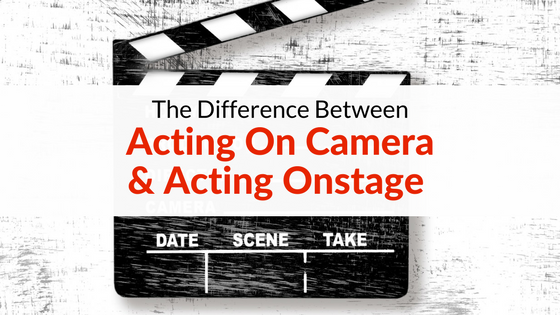
Because I work regularly in both, I’m often asked how acting onstage and acting on camera are different. This week I was on set shooting episodes of The Path (HULU), Law and Order: SVU (NBC) and BULL (CBS) so, between costume fittings, makeup, hair, camera setups and craft services (YUM), I pondered that question and wrote down my thoughts for you.
First, the good news is whether you’re a stage or on camera your internal work is the same. You still have to know who you are - physically and emotionally. What you need and what you’re willing to do to get it. And you have to know how you feel about everything you talk about and everyone you talk to. There’s more than that, of course, but that’s a good start.
The big difference between acting onstage and on camera has to do with distance. On camera, most of the time your scene partner isn’t more than a few feet away from you. So you just talk with them like no one’s watching. Like pillow talk.
On stage, your physical choices have to communicate your intent to an audience that’s sitting 30, 40, 50 feet away or more. On camera that’ll look like you’re trying to be understood in a busy bar at happy hour. It’s gonna be too big.
Stage actors transitioning to work on camera try to fix this by “doing less.” Unfortunately, the result is often a small, whispered, lifeless performance with less feeling, intention and point of view.
I tell stage actors new to working on camera two things. First, they’re having a private conversation. It’s just two people sitting around talking. And second, they’ve gotta burn hot but be cool. Your need has to burn hot inside you but you’ve gotta be cool outside because people rarely try to show you their feelings. They try to hide them.
I encourage film actors transitioning to the stage to find more physical ways to express their choices. On camera, a quick shift of the eyes might be enough to communicate a change of thought but on stage you might need a shift in body weight, a turn off the head or a lean back (or in) to convey it effectively.
The key for both is making choices that are appropriate to the size of the frame you’re in. On stage the proscenium arch is a frame. But a smart actor plays a small house way differently than they’d play Radio City Music Hall. You make the same kind of adjustment working on camera. You play a close-up differently than you play a long shot. Different size frame, different size performance.
Great performances come in all shapes and sizes. Think of your favorite one now. What stands out in your mind isn’t that it was big or small. It was exactly the size it needed to be. What great performances have in common is they’re all intensely human whether they’re dance on the ceiling happy, heartbreakingly funny, shamelessly stupid or quiet and restrained.
The camera and the stage handle performances of all sizes beautifully – as long as they’re genuine and appropriate for the frame they’re working in. So, burn hot and play cool in a size appropriate for the medium you’re working in. See you on set!
All my best,
Philip
Originally published on Backstage
Philip Hernandez is a respected acting teacher and singing coach in NYC. He is also the only actor in Broadway history to play both Jean Valjean and Inspector Javert in Les Miserables. He created principal roles in Broadway’s Kiss of the Spiderwoman and Paul Simon’s The Capeman. You may also know him from his many television appearances: The Blacklist, Gotham, Blue Bloods, The Path, Bull, Nurse Jackie, Elementary, Person of Interest, Law and Order, Hostages and Damages to name a few. For information about acting lessons CLICK HERE or singing lessons CLICK HERE.
Follow him on twitter @philip24601, on Instagram @philip24601 and on Facebook at @philip24601.